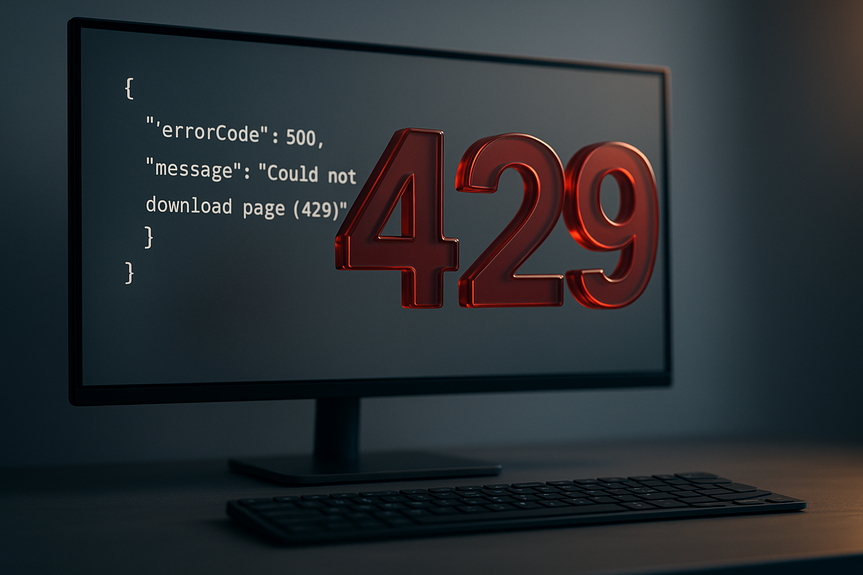ODU AI incubator application cuts setup time by giving researchers and small businesses Google tools.
Get into ODU’s new AI incubator faster with focus and proof. Center your ODU AI incubator application on a real problem ODU cares about, show a small demo on Google Cloud, line up data access and ethics, involve students, and define clear success metrics. Keep it short, measurable, and ready to start within 90 days.
Old Dominion University, together with Google Cloud, launched MonarchSphere to speed AI ideas into real tools for students, researchers, cities, and small businesses. The incubator gives access to advanced AI services without big license costs. It also brings expert support, training, and a growing peer network. Early projects span coastal resilience, defense, cybersecurity, and healthcare. ODU leaders want to see clear public value and strong student learning. They also want safe, accurate AI. This guide shows you how to prepare a tight, credible pitch and get to yes faster.
What the incubator is and why it matters
ODU’s MonarchSphere is a shared AI workspace backed by Google Cloud. Students, faculty, and staff can test ideas, build pilots, and learn new skills. Local governments and small businesses can join, too. The aim is simple: speed up research, cut costs, and turn models into solutions that help people.
ODU professors are already working inside the incubator. A geospatial team is improving hurricane and flood impact estimates for Hampton Roads. Faster processing and smarter models can reveal new risks and better plans. In health, engineering researchers use MRI-based models to predict brain tumor growth. With advanced tools, they cut per-patient runtime from nearly two hours to under 45 minutes. That is a clear win for doctors, patients, and systems.
The incubator offers more than compute. ODU is building AI “advisors” to help staff guide students. The university also connects Google Career Certificates with degrees and continuing education. Students learn AI as content, context, and tool. For outside applicants, ODU plans a simple intake process. That means you should prepare now so you can move fast when doors open wider.
Who should apply and what ODU looks for
MonarchSphere rewards teams that bring real problems, real data, and real value. It supports:
Students and faculty who want to test a focused AI idea
City departments that need better planning or service tools
Small businesses that want to automate, analyze, or predict
Nonprofits that track outcomes and improve programs
ODU’s priorities are public good and skill growth. If your idea helps coastal resilience, defense readiness, cybersecurity, or healthcare, you are in strong shape. Clear value to Hampton Roads or Virginia helps. So does a plan to involve students in meaningful work.
Accuracy and safety matter. ODU knows people worry about whether AI is “telling the truth.” Show how you will measure results and keep humans in the loop. Use simple metrics. Explain how you will test and improve them.
How to fast‑track your ODU AI incubator application
1) Pick a problem that fits MonarchSphere
Start where ODU is active and where Google Cloud is strong.
Coastal resilience: Flood mapping, storm surge risk, or damage estimates
Defense: Readiness dashboards, anomaly detection, secure AI workflows
Cybersecurity: Threat triage, log analysis, incident prediction
Healthcare: Imaging support, triage, operational efficiency, patient flow
Make it small enough to show value in 90 days. A narrow, high-priority use case beats a broad, vague one.
2) Prove local value
Connect your idea to people and places ODU serves.
Show how your pilot helps Hampton Roads residents, students, or clinics
Quantify gains: time saved, accuracy lift, cost cut, lives improved
Name the partner who will use the result (a city office, a lab, a clinic)
A strong local fit makes your pitch stand out.
3) Build a lean Google Cloud demo
You do not need a full product. You do need a working sketch. Use:
Vertex AI for training and inference
BigQuery for data prep and analytics
Notebooks or Workbench for quick experiments
Earth Engine or geospatial tools for maps and models, if relevant
Show a before/after metric. For example, baseline processing time vs. your demo’s time, like the tumor model speedup. Even a small improvement proves promise.
4) Prepare a one‑page concept note
ODU reviewers move faster when the pitch is clear. Keep your note to one page:
Problem: One paragraph on who hurts and how
Data: Source, access status, size, permissions
Approach: Model type, workflow, and why it fits
Outcome: Two or three metrics you will hit in 90 days
Risks: Data gaps, bias, accuracy, or safety concerns
Timeline: Weeks 1–4, 5–8, 9–12 milestones
Team: Names, roles, hours, and student involvement
Finish with a single ask: compute access, storage, and expert time.
5) Secure data and permissions early
Data delays kill good projects. Handle them upfront.
Sign data-use agreements and set access controls
If health data: de-identify and document HIPAA steps
If you need IRB or ethics review: start now
Plan a public data fallback if private data stalls
Clean, lawful access shows you are ready to build on day one.
6) Assemble a balanced team
Good teams blend domain sense and hands-on skill.
Project lead: Owns scope and delivery
AI builder: Sets up data, trains models, tracks metrics
Domain expert: Checks outputs for real-world sense
Student(s): Learn, build, and document
Partner liaison: City or business point of contact
If you are off-campus, recruit an ODU faculty advisor. That link helps your ODU AI incubator application a lot.
7) Ask for only what you need
Resource discipline builds trust. Request:
Modest compute credits with a usage plan
Storage sized to your 90‑day scope
Limited expert hours for reviews and unblockers
Say how you will reduce cost over time. For example, batch jobs at night, small model variants, or pruning.
8) Address accuracy, safety, and bias head‑on
ODU wants useful and honest AI.
Define ground truth and how you will label or verify it
Pick simple metrics: MAE, F1, AUC, or runtime
Run bias checks across key groups or regions
Keep a human in the loop for critical calls
Log decisions and make your runs reproducible
This answers the core question: “Is AI giving us accurate results?”
Key documents and a smart submission timeline
Prepare a tight package so reviewers can say yes quickly.
One‑page concept note
Two‑page technical appendix (data schema, model sketch, metrics)
One‑page ethics and privacy plan
Letters or emails of support from partners
Faculty advisor confirmation (if you are a student team or outside partner)
Short team bios with role and weekly hours
Link to your demo notebook or repo (read‑only is fine)
Timeline tip:
Week 0: Confirm partners and data access
Week 1: Submit package
Week 2–3: Answer reviewer questions and run a live demo
Week 4: Kickoff and resource provisioning
If the intake form is not live yet, send a concise email with your one‑pager and request an interest meeting. Being prepared keeps you first in line.
Student pathways and certificates
ODU links Google Career Certificates with degrees and continuing education. Build that into your plan.
List which certificates students will earn (e.g., data analytics, IT support, AI tools)
Explain hands-on tasks students will do on the project
Schedule check-ins for learning goals, not just deliverables
Add reflection logs so students can convert work into credit or badges
Projects that teach well and ship value rise to the top.
How small businesses and city teams can engage
Outside partners can get involved even as ODU finalizes the intake process. Steps:
Draft a one‑page problem brief with data sources and expected ROI
Choose a small pilot that delivers value in 6–12 weeks
Name a staff owner who can make decisions fast
Define IP and data-sharing basics in a clear memo
Set success metrics that your leadership cares about
Be ready to show up each week. The best pilots move because the partner is engaged.
What reviewers likely score
You do not need a secret formula. Expect these core points:
Relevance: Fit to ODU focus areas and community needs
Feasibility: Data ready, plan clear, risks managed
Impact: Time saved, accuracy gained, costs reduced, lives improved
Student growth: Concrete tasks and outcomes
Ethics and safety: Privacy, bias, and human oversight
Use of Google tools: Clear reason to use the incubator
Readiness: Team formed, demo running, partners engaged
Write your pitch so a busy reviewer can check each box in minutes.
Common mistakes that slow approvals
Vague problem with no clear user
No data access or unclear permissions
Too-big scope with no 90‑day milestones
Fancy models with no baseline metric
No plan for accuracy, bias, or privacy
Student roles that are unclear or just “help out”
Resource ask that is oversized for the goal
Fix these before you hit send.
Example 90‑day plan that wins trust
Days 1–30: Discovery and setup
Finalize data access and de-identification
Build baseline: rule-based or simple model
Draft evaluation metrics and test set
Run a first Vertex AI experiment
Hold a user interview to confirm needs
Days 31–60: Build and iterate
Train two model variants and compare
Cut runtime with better data pipelines
Start documentation and student learning logs
Biweekly demos with partner feedback
Days 61–90: Validate and hand off
Lock metrics, stress test, and bias check
Write a short playbook for users
Package notebooks and set up a simple dashboard
Present results with a clear go/no‑go for scale
This plan shows discipline. It also lets ODU help at the right moments.
How to show success fast
Pick a few strong metrics and track them weekly.
Runtime: Seconds or minutes per job
Accuracy: Error rate, F1, or AUC on a fixed set
Cost: Dollars per run or per prediction
Adoption: Number of active users or decisions supported
Learning: Student hours logged and skills earned
Community impact: People served, days saved, risks reduced
If you work in health, stress time savings and safety checks. If you work in resilience, show maps and numbers that help leaders act before storms. Keep the story simple and useful.
What to write in your cover email
Your message should mirror your one‑pager. Four short paragraphs:
Who you are and your partner
The problem and why it matters now
Your demo result and the 90‑day plan
Your exact ask and a link to the repo
End with two lines on ethics and student roles. Attach the documents. Offer two meeting times.
Final checks before you submit
Is the problem narrow and urgent?
Is the data legal, safe, and ready?
Do you have a working demo and baseline metrics?
Can students learn and contribute from day one?
Can you show value in 90 days?
Is your resource ask modest and specific?
If you can say yes to these, your ODU AI incubator application will read strong, clear, and ready to launch.
MonarchSphere is built to turn smart ideas into local impact. Keep your pitch focused, practical, and safe. Engage a partner, show a demo, and define simple metrics. Do that, and your ODU AI incubator application will move faster and stand out in a growing field.
(Source: https://www.whro.org/business-growth/2025-11-20/old-dominion-university-partners-with-google-to-launch-a-first-of-its-kind-ai-incubator)
For more news: Click Here
FAQ
Q: Who can apply to the MonarchSphere incubator?
A: Students, faculty, staff, local city departments, small businesses and nonprofits can apply, because MonarchSphere supports both ODU community members and outside partners. For an ODU AI incubator application you should emphasize local value and student involvement, since the incubator prioritizes public good and skill growth.
Q: What should I include in a one‑page concept note for the incubator?
A: Keep the one‑page concept note to a single page that covers the problem, data (source and access status), approach and why it fits, outcome metrics, risks, timeline, team roles and weekly hours, and a clear single ask. Finish with a single request for compute access, storage, and expert time to make your ODU AI incubator application review fast.
Q: Do I need a demo on Google Cloud, and what counts as acceptable proof?
A: A working Google Cloud demo is expected; use Vertex AI for training and inference, BigQuery for data prep and analytics, notebooks for experiments, and Earth Engine for geospatial work when relevant. A lean demo that shows a clear before/after metric, such as baseline processing time versus your demo’s runtime, will strengthen your ODU AI incubator application.
Q: How should I handle data access, privacy, and ethics in my application?
A: Secure data‑use agreements and access controls early, de‑identify health data and document HIPAA steps if applicable, start IRB or ethics review as needed, and plan a public‑data fallback if private data stalls. Addressing these steps up front shows readiness and strengthens your ODU AI incubator application.
Q: What team roles increase the chances of approval?
A: A balanced team should include a project lead to own scope and delivery, an AI builder for data and models, a domain expert to check real‑world sense, student contributors for learning and documentation, and a partner liaison, and off‑campus teams should recruit an ODU faculty advisor. List names, roles, and weekly hours in your ODU AI incubator application so reviewers can assess readiness.
Q: What do reviewers usually look for when scoring proposals?
A: Reviewers look for relevance to ODU focus areas and community needs, feasibility including data readiness and risk management, clear impact, student growth, ethics and safety, appropriate use of Google tools, and overall readiness. Tailor your ODU AI incubator application so a busy reviewer can quickly check each box.
Q: What common mistakes slow approvals and how can I avoid them?
A: Common mistakes include a vague problem with no clear user, no data access or unclear permissions, an overly large scope without 90‑day milestones, fancy models with no baseline metric, no plan for accuracy or bias, unclear student roles, and oversized resource requests. Fix these issues before you submit to improve your ODU AI incubator application.
Q: How should I structure a 90‑day plan to show quick progress?
A: A winning 90‑day plan breaks into discovery and setup (days 1–30: finalize data access, build a baseline, draft metrics, and run a first Vertex AI experiment), build and iterate (days 31–60: train model variants, improve pipelines, and demo biweekly), and validate and hand off (days 61–90: lock metrics, run bias checks, package notebooks, and present a go/no‑go). Attach this timeline to your ODU AI incubator application and include student tasks, milestones, and a short playbook for users.







